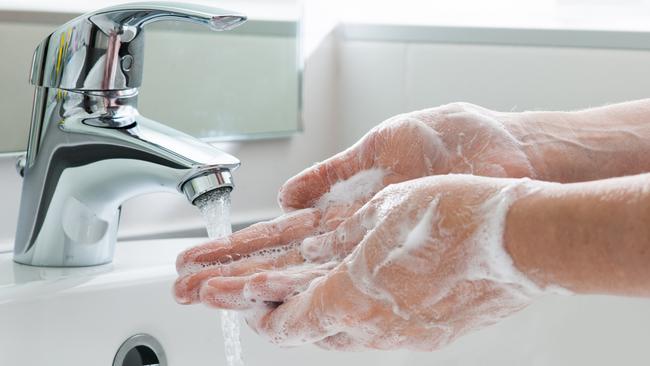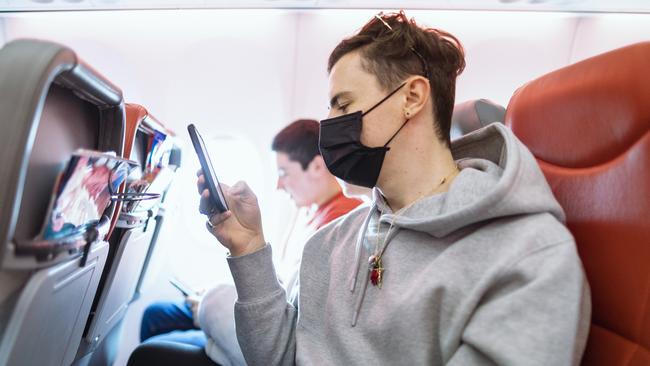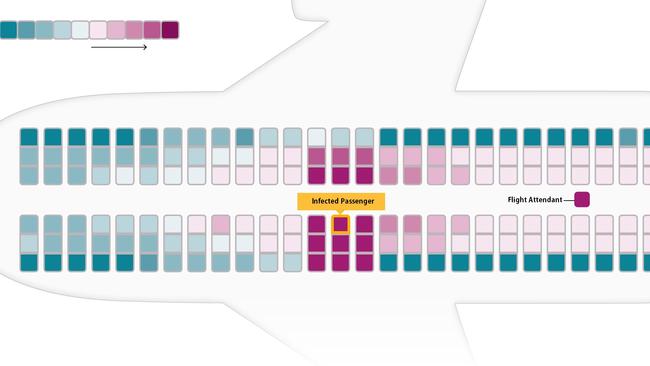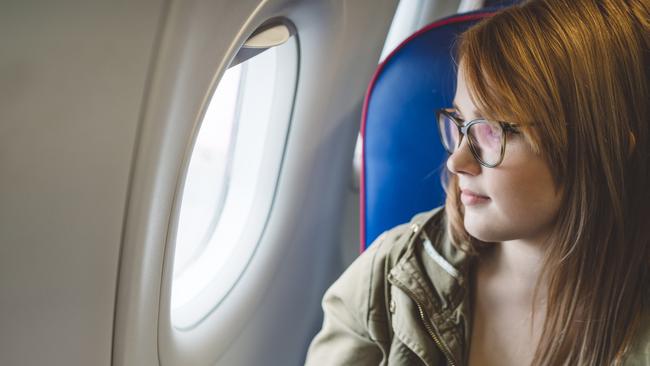How to stay safe on a plane amid the global coronavirus outbreak
As the number of coronavirus cases spreads, it’s natural for travellers to feel nervous about hygiene measures on board planes. Here’s one myth you should ignore.
Travel News
Don't miss out on the headlines from Travel News. Followed categories will be added to My News.
As the number of coronavirus cases skyrocket around the world, it’s natural for travellers to become wary about whether they should still proceed with an upcoming holiday abroad.
Since the initial outbreak of coronavirus in China, the virus has spread into more than 85 countries worldwide – including Australia, Italy, Iran, the USA and the UK.
When it comes to air travel, no industry has taken a bigger hit with thousands of flights cancelled globally, and airlines forced to take drastic measures to deal with dwindling consumer demand.
RELATED: All the latest coronavirus coverage
RELATED: Countries where coronavirus has been confirmed
But if you are still planning on boarding a flight – and let’s face it, a lot of Australians will still do so heading into the European summer – there are a few ways you can minimise the risk of catching coronavirus on board a plane.
Here, we’ll crack some myths about air travel and what you actually need to do at 38,000 feet to stay as virus-free as possible.
WASH YOUR HANDS
It may come as a surprise that spreading of the COVID-19 virus isn’t through the air in the plane cabin. It’s by not keeping your hands clean throughout a flight.
On an aircraft, handrails, lavatory handles and levers are notoriously dirty.
Bring a small hand sanitiser on board – it’s a great and easy way to keep clean. You can also pack a small amount of antiseptic hand wipes, which can be used to wipe down armrests, remote controls at your seat and your tray table.
RELATED: How to wash your hands properly

RELATED: Hand sanitiser VS soap which is better?
The medical advisor of the International Air Transport Association, David Powell, told Bloomberg the risk of contracting coronavirus, or any serious viral infection, was “low” on planes as cabin air was purified with surgical-grade filters.
“The air supply to a modern airliner is very different from a cinema or an office building,” he said.
“The air is a combination of fresh air and recirculated air, about half each. The recirculated air goes through filters of the exact same type that we use in surgical operating theatres.
“That supplied air is guaranteed to be 99.97 per cent — or better — free of viruses and other particles. So the risk, if there is one, does not come from the supplied air. It comes from other people.”
According to the BBC, Professor Quingyan Chen at Purdue University, who studies air quality in different passenger vehicles, estimates that the air on a plane is completely replaced every 2-3 minutes, compared with every 10-12 minutes in an airconditioned building.
RELATED: What to do if you’re sick

While flying, people should avoid contact with sick passengers. The World Health Organisation defines contact with an infected person as being seated within two rows of one another.
When it comes to hand sanitiser, look for products that contain 60 per cent – 95 per cent alcohol.
“Contrary to what people think, the hands are the way that these viruses most efficiently spread,” Dr Powell said.
“Top of the list is frequent hand washing, hand sanitising, or both.”
SIT NEXT TO THE WINDOW
Researchers have determined the window seat was the best place to sit on a plane to avoid coronavirus.
A study of the behaviours of passengers and airline crew by researchers at Emory University in Atlanta, Georgia found those who were seated in the window had less contact with potentially infected people.

Respiratory illnesses, like coronavirus, generally spread through a person coming into contact with an infected person’s saliva or mucus.
Those sitting in window seats had less interaction with other passengers – beyond those sitting within two rows of them – thus limiting their chances of interacting with an infected person, researchers said.
According to the study, passengers who are at a medium risk of catching the virus are those who are seated within 1.8 metres of a traveller with the infection. This distance is approximately two seats in each direction.
People considered at low risk are those who are seated within two rows of a sick traveller but not within 1.8m.

“Suppose you’re seated in an aisle seat or a middle seat and I walk by to go to the lavatory,” Howard Weiss, professor of biology and mathematics at Penn State University, told National Geographic of the seating chart.
“We’re going to be in close contact, meaning we’ll be within a metre. So if I’m infected, I could transmit to you.”
But Dr Weiss says because people move down the aisles quickly, even those seated along the aisle will unlikely catch the virus from an infected passenger.
“If you’re seated in an aisle seat, certainly there will be quite a few people moving past you, but they’ll be moving quickly,” Weiss said.
“In aggregate, what we show is there’s quite a low probability of transmission to any particular passenger.”
Originally published as How to stay safe on a plane amid the global coronavirus outbreak

